Which of the pottery pieces below do you find the most interesting?
Have a closer look at our amazing pottery collection!
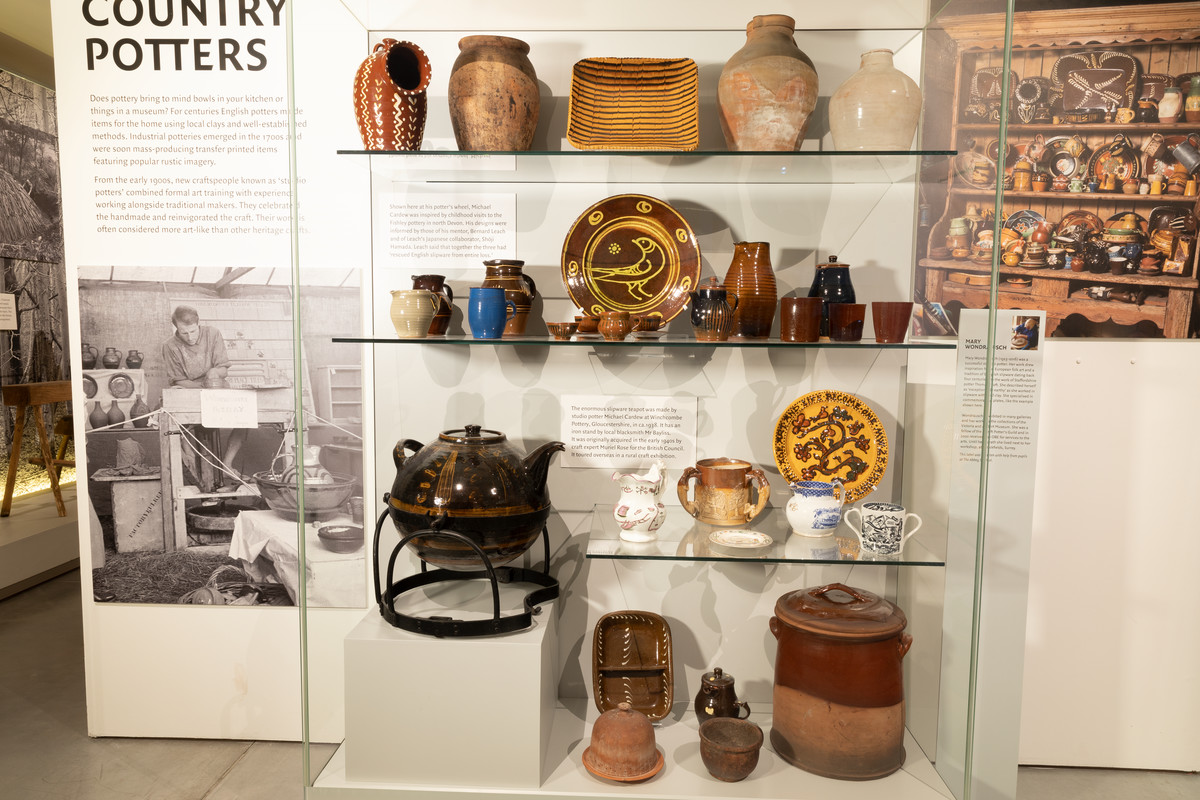
Salt Pig
Lard Jar
Slipware Dish
Tankard
Dish
Coffee Set
Teapot
Jug
Jug
Parting Dish
Warming Pot
Bread Bin
Loving Cup
Plate
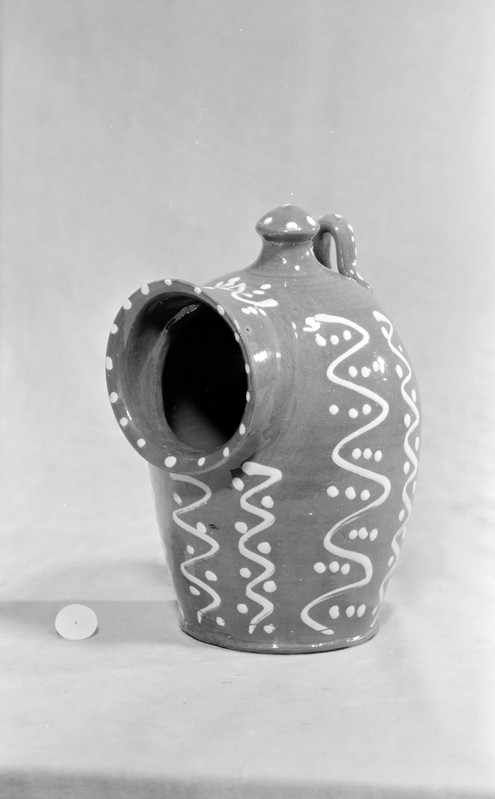
Salt Pig
This type of jar is called a ‘salt jar,’ ‘salt pig’ or ‘salt kit’. This jar was made in 1947 by A. Schofield at the Wetheriggs Pottery in Clifton Dykes, Cumbria.
This jar has a protruding round, flared opening in the side, one handle and a knob on the top. It is decorated with a trailed slip design in cream, with ‘SALT’ written on the back in black slip, and the whole jar is covered in a clear glaze.
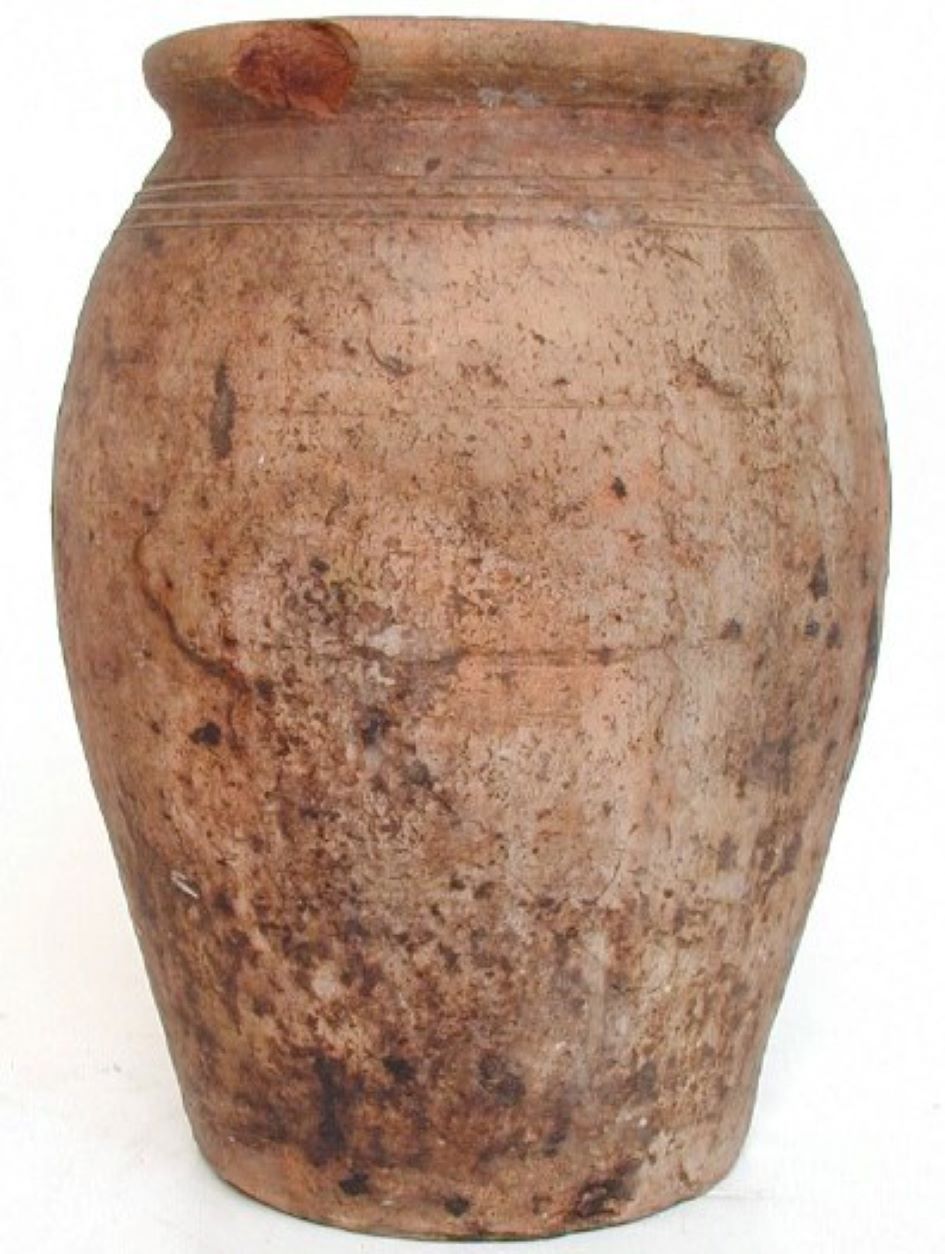
Lard Jar
This lard jar was used by the donor’s family at Polventon, Cornwall for holding lard after a pig-killing until c.1950. It is made of Tavistock clay and was made by Andrews, an employee of the Chapel Hill Pottery, Truro, c.1880. In the local area it was also called a ‘Bussa’ or ‘Stein’.
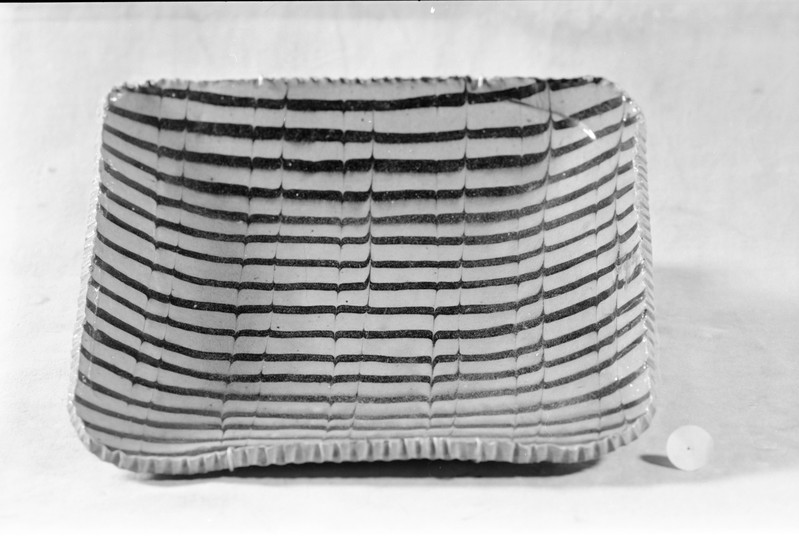
Slipware Dish
This rectangular dish with curved sides which are ribbed at the edges, is an example of ‘slipware pottery.’ Slipware is a type pf pottery which uses slip (semi-liquid clay and water) on a contrasting-coloured clay body, often for decoration. It is a traditional form of pottery in Great Britain.
This dish has a combed slip design in dark brown, on a yellow background. It was made circa 1945–60 by John Bew of Odney Pottery in Cookham, Berkshire, for serving food.
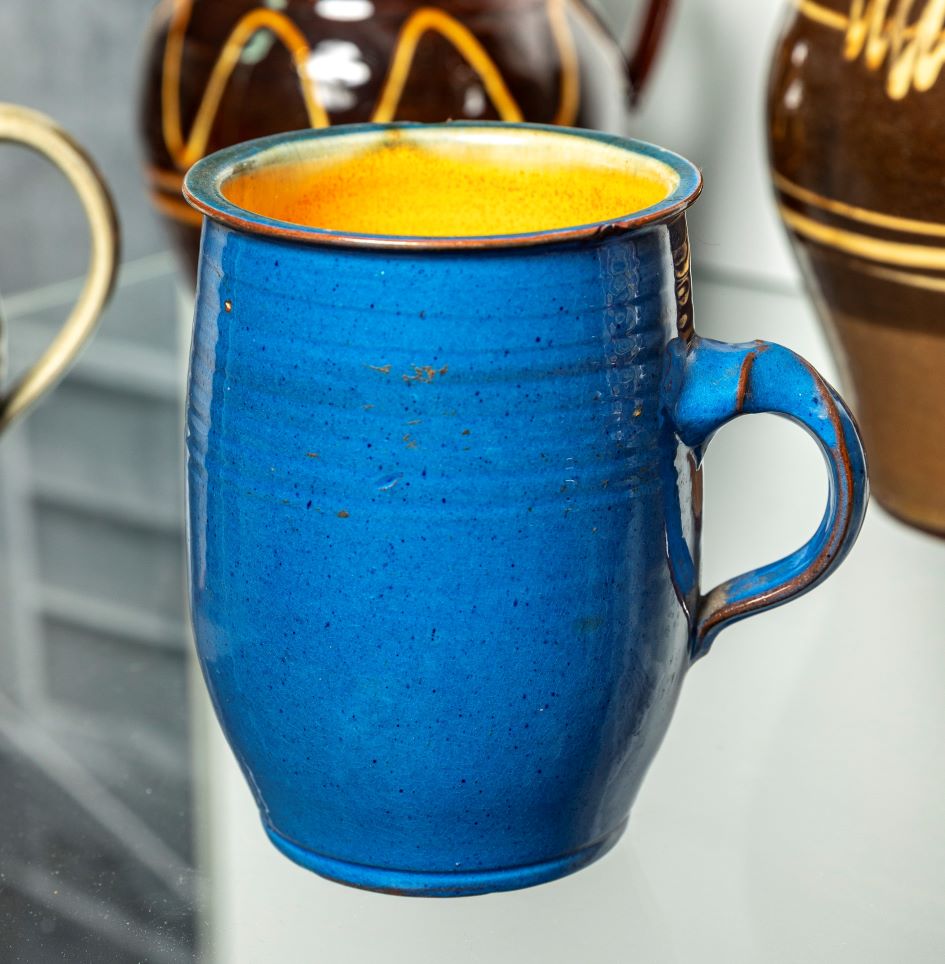
Tankard
This is a glazed pottery vessel featuring a distinctive pinched design to the handle. A combination of size and form mean that this object was probably intended to function as a mug or ceramic tankard. However, due to a lip running round the entire upper rim this item was described by its owner as a vase. Made by Fishley Holland, this object was collected by the potter Mary Wondrausch as an example of the work of this significant studio pottery.
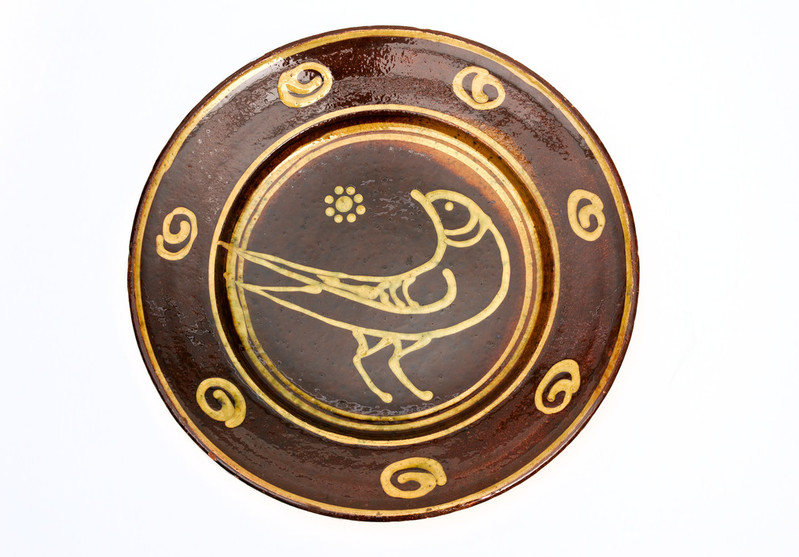
Dish
This large round dish was part of a large collection of traditional craft products acquired from the British Council in 1960. It was made circa 1926–39 by Michael Cardew at Winchcombe Pottery in Winchcombe, Gloucestershire.

Coffee Set
This stoneware coffee set comprises of a coffee pot with lid, a cream jug, a sugar bowl, and six cups and saucers. Each piece has a brown tenmoku glaze – a dark glaze with a surface which resembles oil-spotting – and, with the exception of the saucers, each piece is fluted, with the concave portions shaded dark green.
It was made circa 1945–60 by Harry and May Davis at the Crowan Pottery in Praze-an-Beeble, Cornwall.
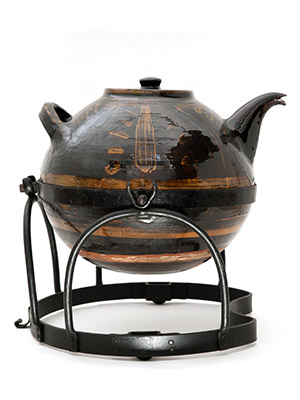
Teapot
This large tea pot was part of the collection acquired from the British Council in 1960. It was made in circa 1945–6 by Michael Cardew at Winchcombe Pottery in Winchcombe, Gloucestershire, this oval shaped teapot can hold 6.5 gallon of tea! It is most likely to have been used at country meetings.
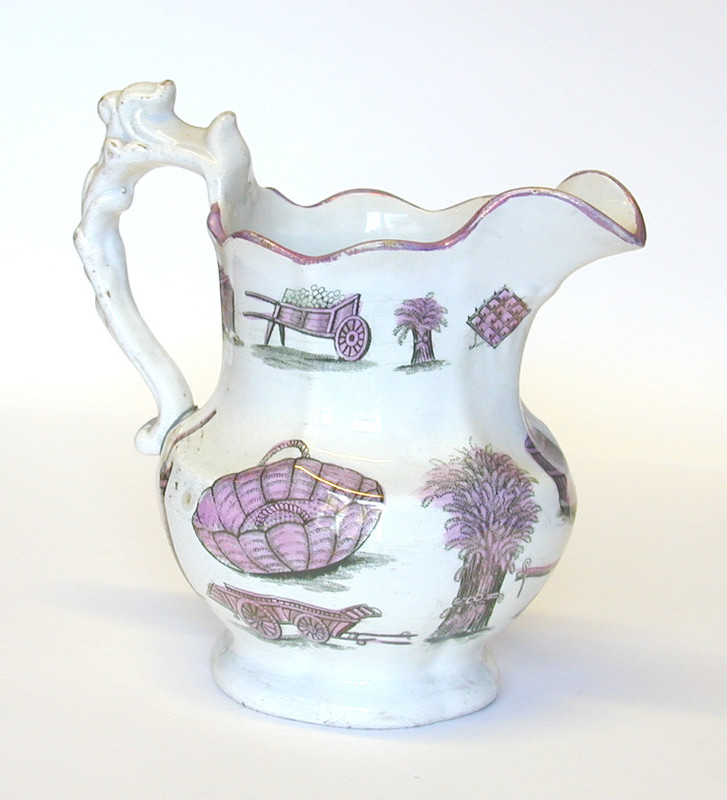
Jug
The pink lustre decoration on this pottery jar features farming and agriculture tools such as winnowing fan, barrow, cart, shears and a plough
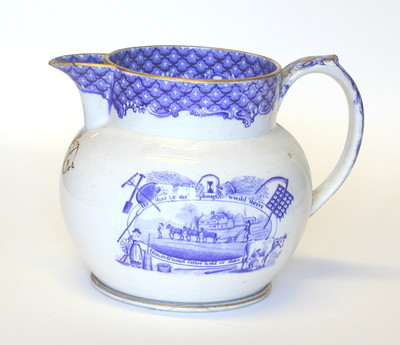
Jug
This jug was originally used for making lemonade from fresh lemons. The strainer at the lip of the jug was for stopping the bits of fruit from being poured into the glass.
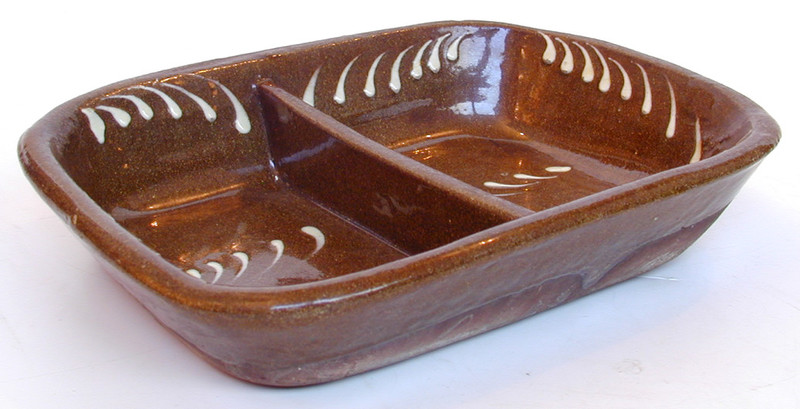
Parting Dish
This unique design of the ‘Parting dish’ came in handy, particularly at harvest time, when dishes were sent out to the fields, with vegetables on one side, Yorkshire pudding on the other and meat resting on a trivet above. The material of the dish also allowed it to be used as a cooking utensil.
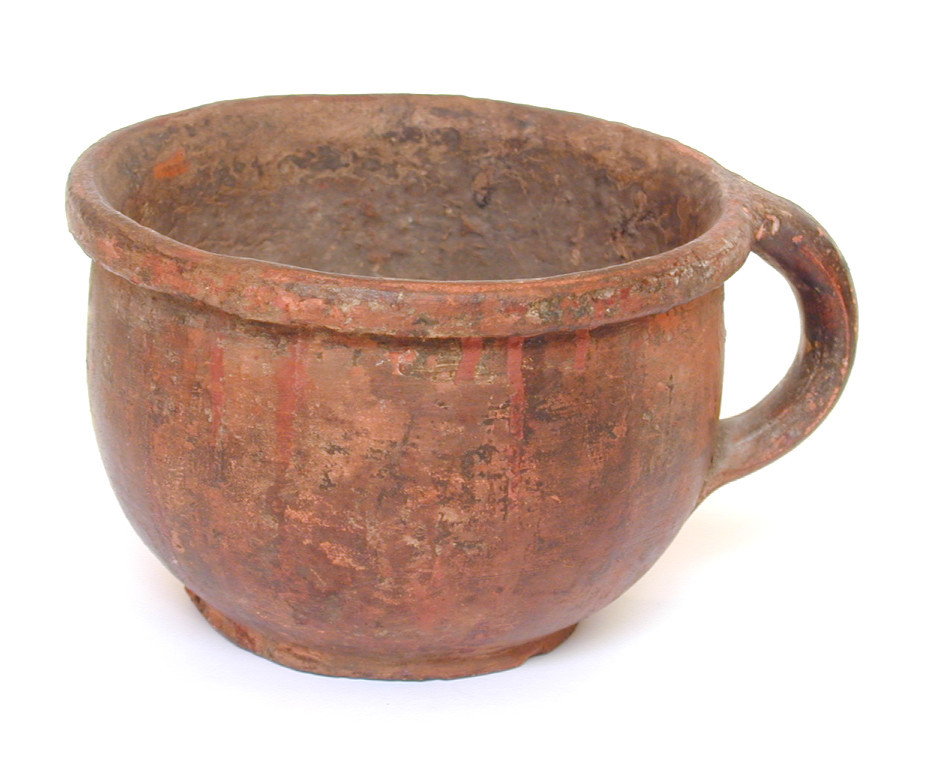
Warming Pot
Warming pots, also known as ‘dickey pots’, ‘fire pots’, ‘hot pots’ and ‘chad pots,’ were used for warmth by lace-makers instead of fire. This is because the smoke and dust from the fires could soil their work.
They were filled every morning with hot wood ashes obtained from a baker and placed at the feet of the lacemaker, or under the candle block. This warming pot is made of rough brown earthenware.
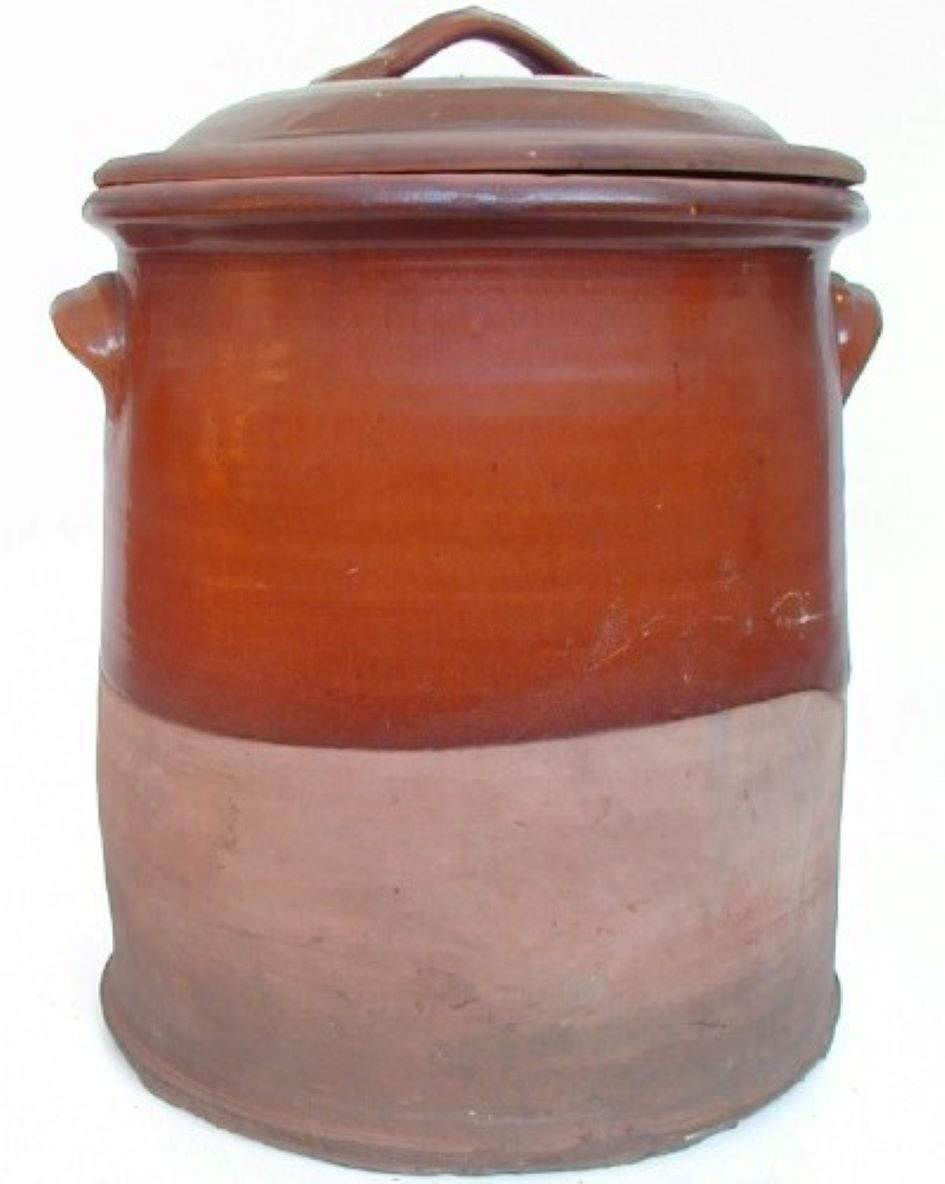
Bread Bin
This pottery bread bin with lid and two handles was made in 1947 by A. Schofield at the Wetheriggs Pottery in Clifton Dykes, Cumbria. The bin is glazed on the interior, the upper half of the exterior, and the lid. It is part of a large collection of traditional craft products acquired from the British Council in 1960.
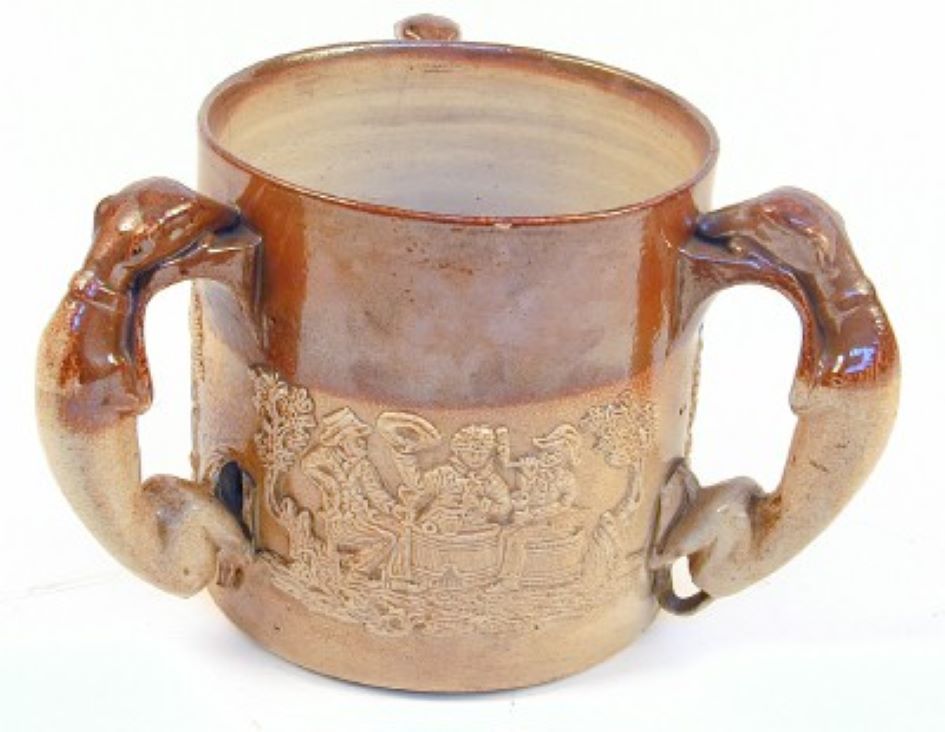
Loving Cup
This mug was originally the largest mug in a set of three. It belonged to the donor’s family for many years, and may have originated in Chesterfield, Derbyshire. It is thought to date to the early-nineteenth century. It has three handles.
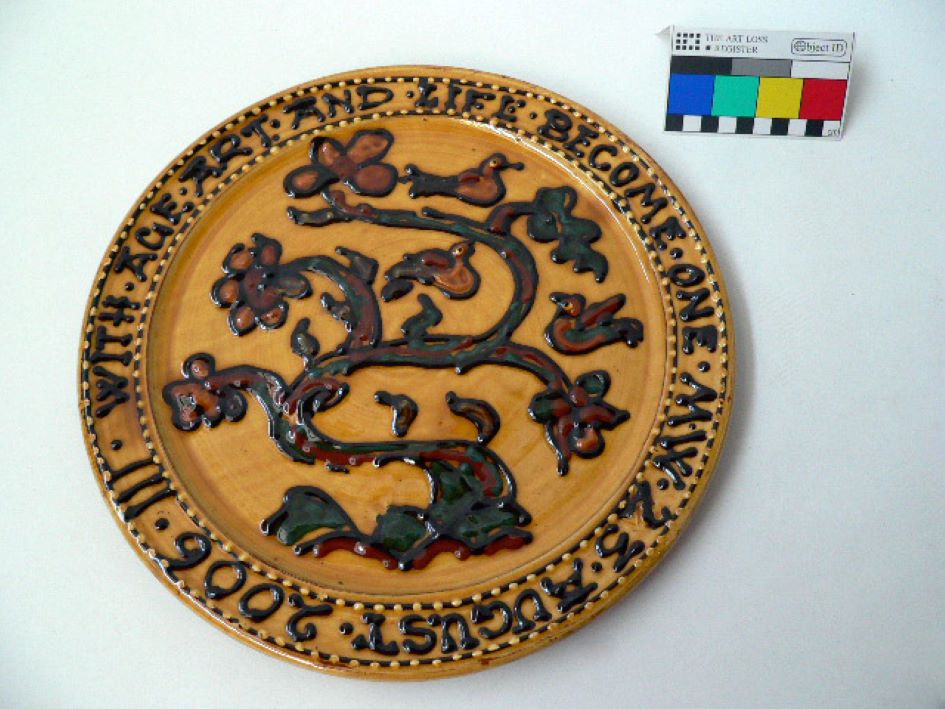
Plate
This is a slipware plate, known as a ‘charger’, with a honey glaze, a ‘tree of life’ pattern in the centre and the words ‘With Age, Art and Life Become One, MW 23 August 2006’ around the edge. It was made for the Museum by Mary Wondrausch in 2006